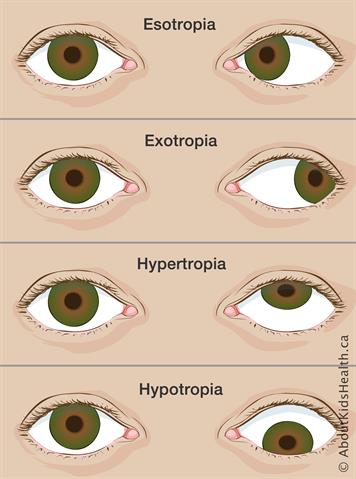Smog Tower
Delhi will get its 1st smog tower in Connaught Place that aims to help combat air pollution at hotspots.
- The smog tower is expected to clean the air around a 1-km radius.
- It will purify 1,000 cubic metres of air per second, helping reduce PM 2.5 and PM 10 levels in the locality.
- The smog tower will take the polluted air from the top and emit the purified air near the ground through fans fitted on sides.
- It has around 40 wings that emit purified air at 10 m above the ground.
- A control room has been set up at the site to monitor the operations of the smog tower.
- Another 25-metre-tall smog tower is being built by the central government at Anand Vihar, Delhi.
Rain at Greenland Summit
For the 1st time on record, the summit of Greenland received rain and not snow, just as temperatures at the spot went above freezing for the 3rd time in less than 10 years.
Greenland is the world’s largest island between the Arctic and Atlantic Oceans.
Three-quarters of its surface is covered with a permanent ice sheet (656,000 square miles large.)
- As per the US National Snow and Ice Data Center, this was the heaviest rainfall that the Greenland received since record keeping began in 1950.
- At the highest point on Greenland’s ice sheet, the US’s National Science Foundation maintains a Summit Station, a research facility that observes changes occurring over the island as well as in Arctic weather.
- The research facility observed rain at the normally frigid summit, with the precipitation extending up to Greeland’s southeast coast.
- Not only is water warmer than the usual snow, it's also darker - so it absorbs more sunlight rather than reflecting it away.
- Rain & high temperatures triggered extensive melting here, which is 7 times more than daily average observed at this time (August) of the year.
- Rapid ice melting will be running off into the ocean in volumes, thus accelerating global sea level rise.
- Concern - The UN’s “code red” climate report concluded that the burning of fossil fuels led to Greenland melting in the last 20 years.
- Arctic Ocean may witness ice-free summers by 2050 due to extreme climate interventions.
- If that happens, sea levels could rise by 20 feet, threatening low-lying cities around the world such as Mumbai, New York, etc.
- Rapid melting is also threatening polar bears, which have to make their way towards Greenland’s interior from the coasts, where they usually find enough food.
Malabar Rebellion of 1921
August 20, 2021 marks the centenary of the Malabar rebellion or the Moplah (Muslim) riots of 1921.
- Malabar rebellion had been an uprising of Muslim tenants (Moplahs) against local Hindu landlords (Jenmis) and British rulers.
- The uprising, which began as part of the Khilafat Movement, took place in regions which are under the Malappuram district, Kerala.
- It was an armed revolt led by Variyamkunnath Kunjahammed Haji.
- It has been perceived as one of the 1st nationalist uprisings in southern India. It has even been described as a peasant revolt.
- In 1971, the Kerala government had included the participants of the rebellion in the category of freedom fighters.
- Impacts - The rebellion of Mappilas inspired by religious ideology and a conception of an alternative system of administration - Khilafat government - dealt a blow to the nationalist movement in Malabar.
- Fanaticism of rebels, foregrounded by the British, fostered communal rift and enmity towards the Congress.
Jalakanyaka
A new marine algae species with an umbrella-like cap, which has been named Jalakanyaka, has been discovered on Andaman & Nicobar Islands.
- The new algae species has been named ‘Acetabularia jalakanyakae’, after the Sanskrit word ‘Jalakanyaka’ meaning the ‘goddess of oceans’ or ‘mermaid’.
- This species is the 1st of the genus Acetabularia to be discovered in India. It is also the first of its kind on the Island.
Algal diversity is one of the highest in the Andaman & Nicobar Islands.
- Features - This delicate species has an intricate umbrella-like design.
- The whole plant is made up of just one cell with only one nucleus.
- Furthermore, a structure called a rhizoid is formed towards the end of the plant cell containing its nucleus.
- This allows the algae to attach to the rocks underneath the shallow tropical ocean, where it grows.
- Another feature of Acetabularia is their regenerative potential. For example, if the top part of the algae is cut off, it can regrow the structure.
- Threats - Rising seawater temperature decreases oxygen concentration in water, dangerously affecting all organisms that depend on oxygen to live, including this species.

Algae
- Algae is a group of predominantly aquatic, photosynthetic, and nucleus-bearing organisms that lack the true roots, stems, leaves, and specialized multi-cellular reproductive structures of plants.
- They range in size from microscopic Micromonas species to giant kelps that reach 60 metres in length.
- Oxygen producers - Algae produce oxygen through photosynthesis. They turn CO2 into biomass and release oxygen.
- Marine algae produce almost two-third of oxygen in the air we breathe.
- Food producers - Algae convert atmospheric CO2 into food for the marine ecosystem. They are at the base of the food chain.
- Also, when the algae die, they are consumed by decomposers (mostly fungi and bacteria).
- Petroleum fossils - When Algae die, they sink to the ocean floor.
- Over the years, this layer turns into what we know as petroleum.
- Algae is not only important for the environment but for studies and research too.
- But, Algae that has industrial, medical, and survival importance is being affected by Climate change factors like rise in temperature decreases oxygen levels in the water, ocean acidification, etc
Rise in Myopia in Children
Ophthalmologists have reported a sharp rise in myopia in children - 25% rise in onset and 100% progression with myopia - in 2020 during the pandemic.
- Myopia (nearsightedness) is a condition where objects at a distance are not clearly visible and a person must wear corrective spectacles.
- It occurs when the eyeball becomes longer, relative to the focusing power of the cornea and the lens; this leads to focus not on the surface of the retina, but at a point before it.
Distant objects appear blurred but close objects look clear.
- Symptoms - The most common ones are squinting, eye strain, headaches and fatigue.
- It can lead to complications like early onset of cataract, retinal detachment, glaucoma, myopic maculopathy, and myopic strabismus fixus.
- Causes - The recent progression and early onset of myopia in children during the pandemic is attributed to
- Overdose of exposure to mobile phones, and
- Lack of physical activity and sunlight.
- 1 in 4 children is affected by myopia, due to online classes. An average child spends around 8 to 10 hours on a laptop or desktop.
- Precautions - Limiting the time with devices will help in the well-being of the children.
- A balanced diet which will include carrots, greens, fish and eggs should be followed.
- They must be taught to do yoga and listen to music.
- Children must be allowed to play so that they can absorb sunlight.
Esotropia
There is a five-fold increase in children with acute onset of esotropia.
- When an eye crosses inward, it is termed esotropia (“Eso” means to turn inward toward the nose.)
Intermittent crossing of an infant’s eyes under about 4 to 5 months is normal. However, constant crossing of the eyes may be a concern.
- Esotropia is a type of strabismus.
- It can occur in just one eye or alternate between both eyes.
- It is rare for both eyes to cross in at the same time.
- Three forms of esotropia - Congenital or infantile esotropia, Acquired strabismus and Microstrabismus.
Types of strabismus (Based on the positions of the eye)
- Hypertropia is when the eye turns upwards
- Hypotropia is when the eye turns downwards
- Esotropia is when the eye turns inwards
- Exotropia is when the eye turns outwards
- Cyclotropia refers to the rotation of one eye around its visual axis.
- Anisolated form of strabismus (i.e., one that does not occur in combination with paralytic strabismus),
- This disorder is extremely rare.

Source: Reuters, BBC, The Hindu, The New Indian Express, Financial Express

